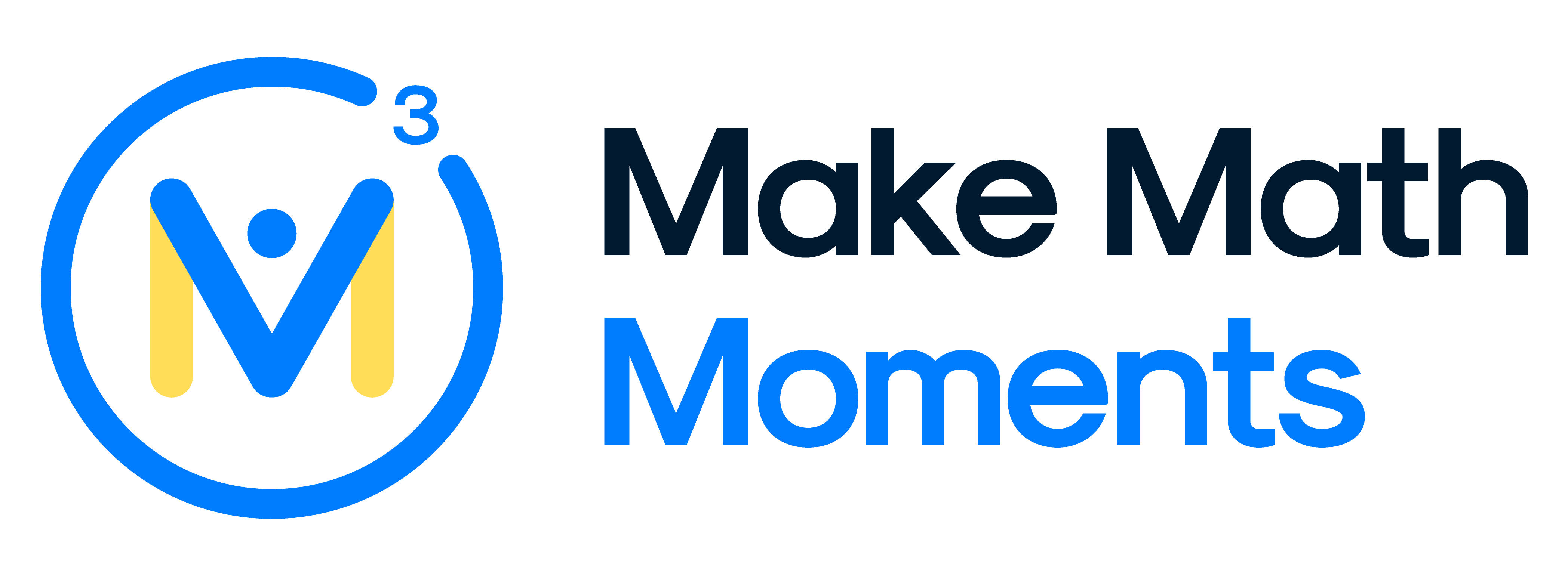LAUNDRY DAY [DAY 3]
ADDITION STRATEGY: PLACE VALUE TO ALGORITHM
Explore efficient strategies to add values within 50
Intentionality
Spark Curiosity
Fuel Sensemaking
During Moves
Student Approaches
Next Moves
Consolidation
Reflect and Consolidation Prompts
Resources & Downloads
Educator Discussion Area
Intentionality & Unit Overview

Length of Unit: 5 Days
Access each lesson from this unit using the navigation links below
Students will solve a subtraction question using the addition strategy of place value leading to a discussion about the standard algorithm.
Intentionality…
Students will solve a subtraction question using the addition strategy of place value leading to a discussion about the standard algorithm.
Some of the big ideas that may emerge today include:
- Understanding hierarchical inclusion allows for flexible composing and decomposing of numbers
- Numbers can be decomposed by separating a whole into two or more parts
- Addition names the whole in terms of the parts
- Different addition situations will elicit different strategies
- Number relationships provide the foundation for strategies to help students remember basic facts
- Models can be used to connect concrete to abstract
Before starting this unit, students should be familiar with:
- Understanding of place value
- Single Digit Addition Strategies ( e.g., 8 + 7 = 15, 6 + 3 = 9, etc)
- Adding groups of ten (e.g., 30 + 20 = 50, etc)
Spark Curiosity
What Do You Notice? What Do You Wonder?
Show students the following video:
Then, ask students:
What do you notice?
What do you wonder?

Give students about 30-60 seconds to do a rapid write on a piece of paper or silent individual think time.
Replaying the video can be helpful here if appropriate.
Then, ask students to pair share with their neighbours for another 60 seconds.
Finally, allow students to individually share with the entire group. Be sure to write down these noticings and wonderings on the blackboard/whiteboard, chart paper, or some other way that is visible to all. This helps students to see the thinking of their classmates and ensures each student that their voice is acknowledged and appreciated. Adding student names or initials next to their notice/wonder is one way to acknowledge their participation and can motivate others to join in.
Some noticings and wonderings that may come up:
- I notice lots of clothes on the ground.
- I noticed a bedroom.
- I notice lots of different clothes.
- I wonder who’s bedroom this is? How are they?
- I wonder why the room is so messy.
- I wonder how many pieces of clothing are on the ground.
- And many more
Fuel Sense-making
Crafting A Productive Struggle: Prompt
Since we’ve already invested time to set the context for this problem and student curiosity is already sparked, we have them in a perfect spot to help push their thinking further and fuel sense making.
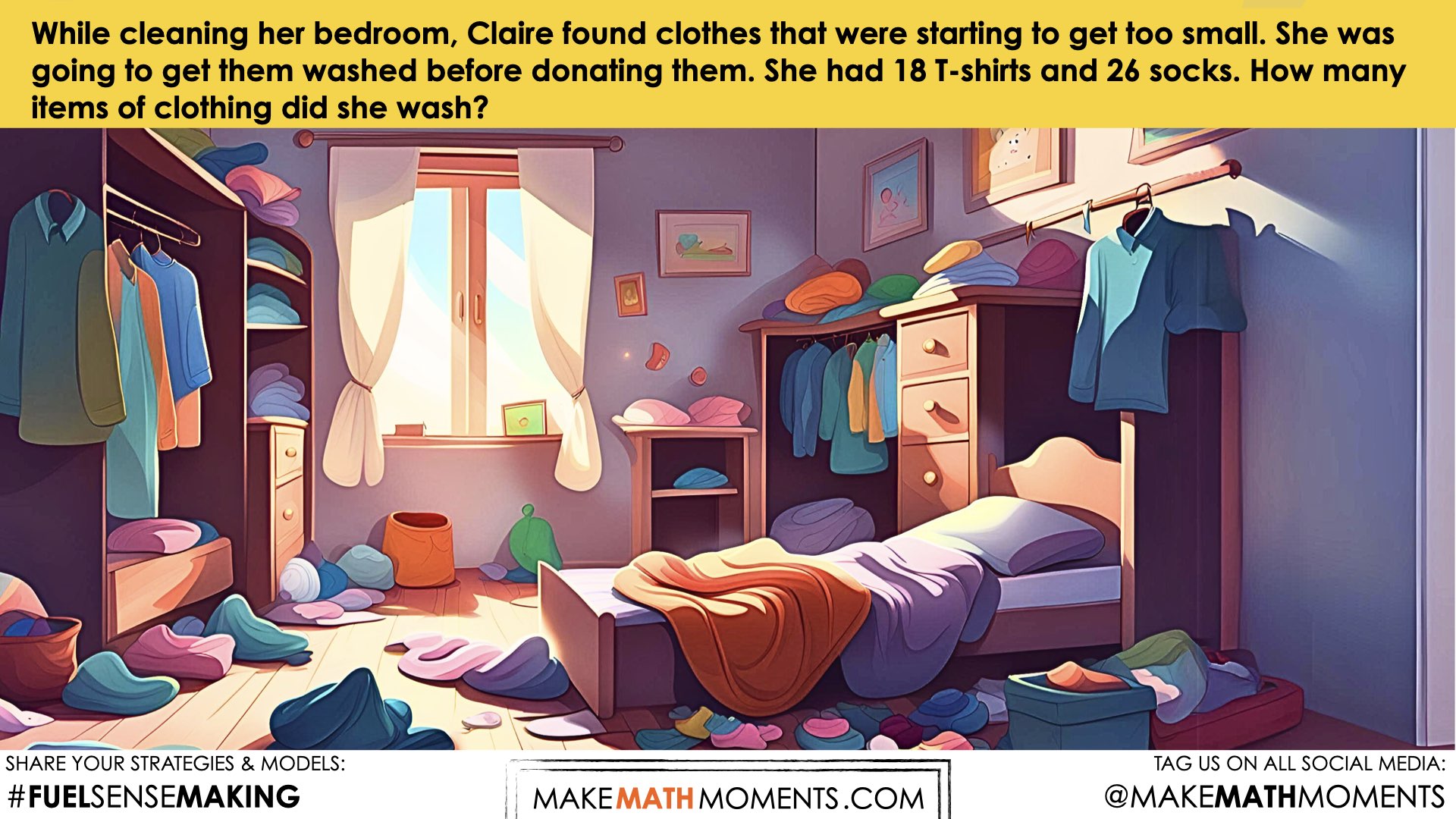
Here we are asking students to envision a solution path. By considering what information will be needed and how it can be used to solve the problem, students are being asked to make sense of the problem and reason abstractly and quantitatively (Math Practices 1 and 2). By not simply providing this information, we are inducing students to engage more deeply with the problem and think about all of its parts, known and unknown, before they begin crunching the numbers.
During Moves
While Students Are Productively Struggling…
Login/Join to access the entire Visual Prompt, downloadable slide decks and printable handouts for this lesson and all problem based units.
Student Approaches
Student Approach #1: Counting All with a Drawing
Login/Join to access the entire Visual Prompt, downloadable slide decks and printable handouts for this lesson and all problem based units.
Student Approach #2: Decompose One Addend on an Open Number Line
Login/Join to access the entire Visual Prompt, downloadable slide decks and printable handouts for this lesson and all problem based units.
Student Approach #3: Place Value/ Standard Algorithm with base ten manipulatives
Login/Join to access the entire Visual Prompt, downloadable slide decks and printable handouts for this lesson and all problem based units.
Student Approach #4: Partial Sums
Login/Join to access the entire Visual Prompt, downloadable slide decks and printable handouts for this lesson and all problem based units.
Student Approach #5: Place Value/ Standard Algorithm
Login/Join to access the entire Visual Prompt, downloadable slide decks and printable handouts for this lesson and all problem based units.
Next Moves
Reveal
Show students the following reveal video:
Reveal Option #1
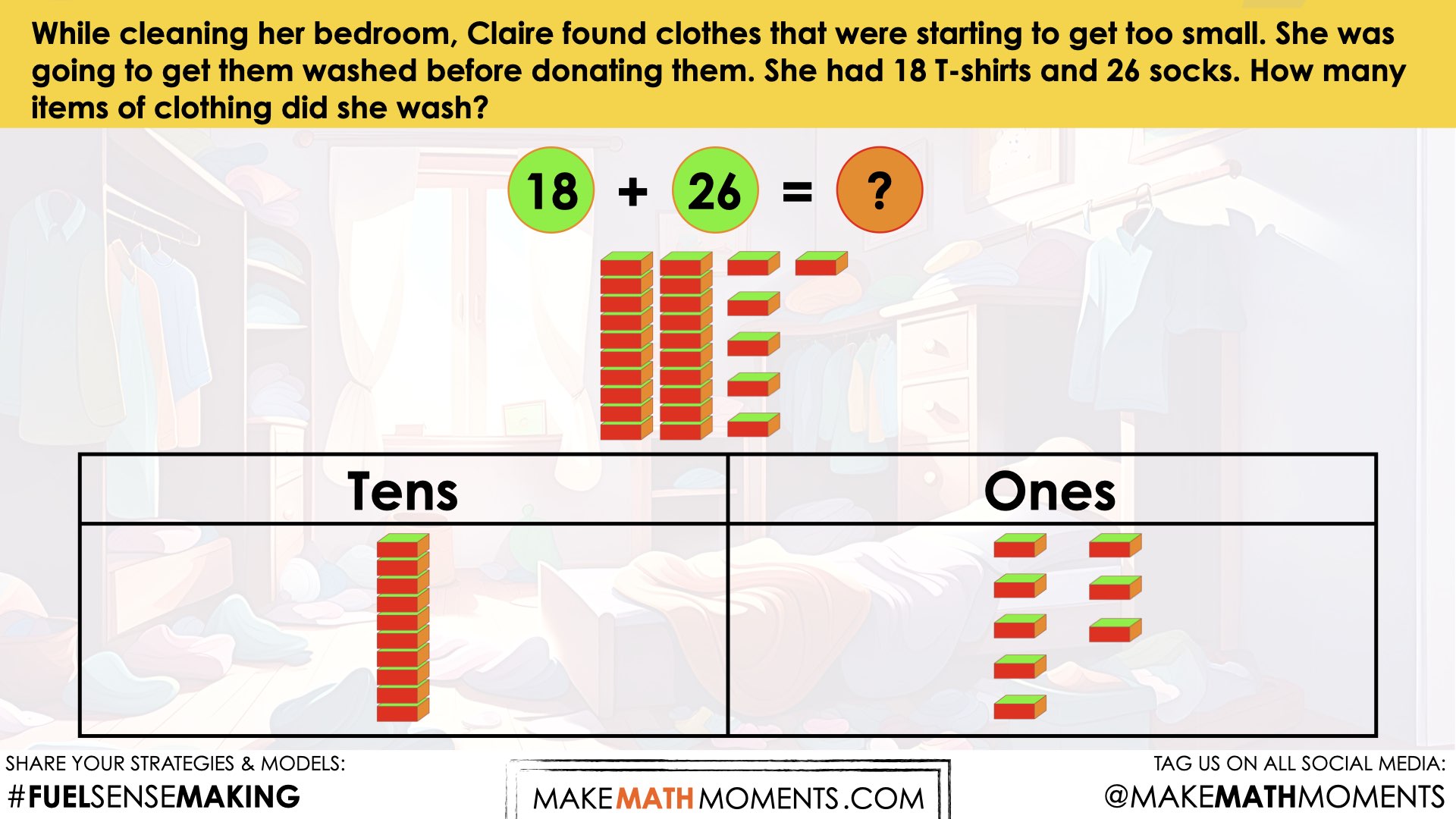
18 and 26 are represented with the base ten blocks.
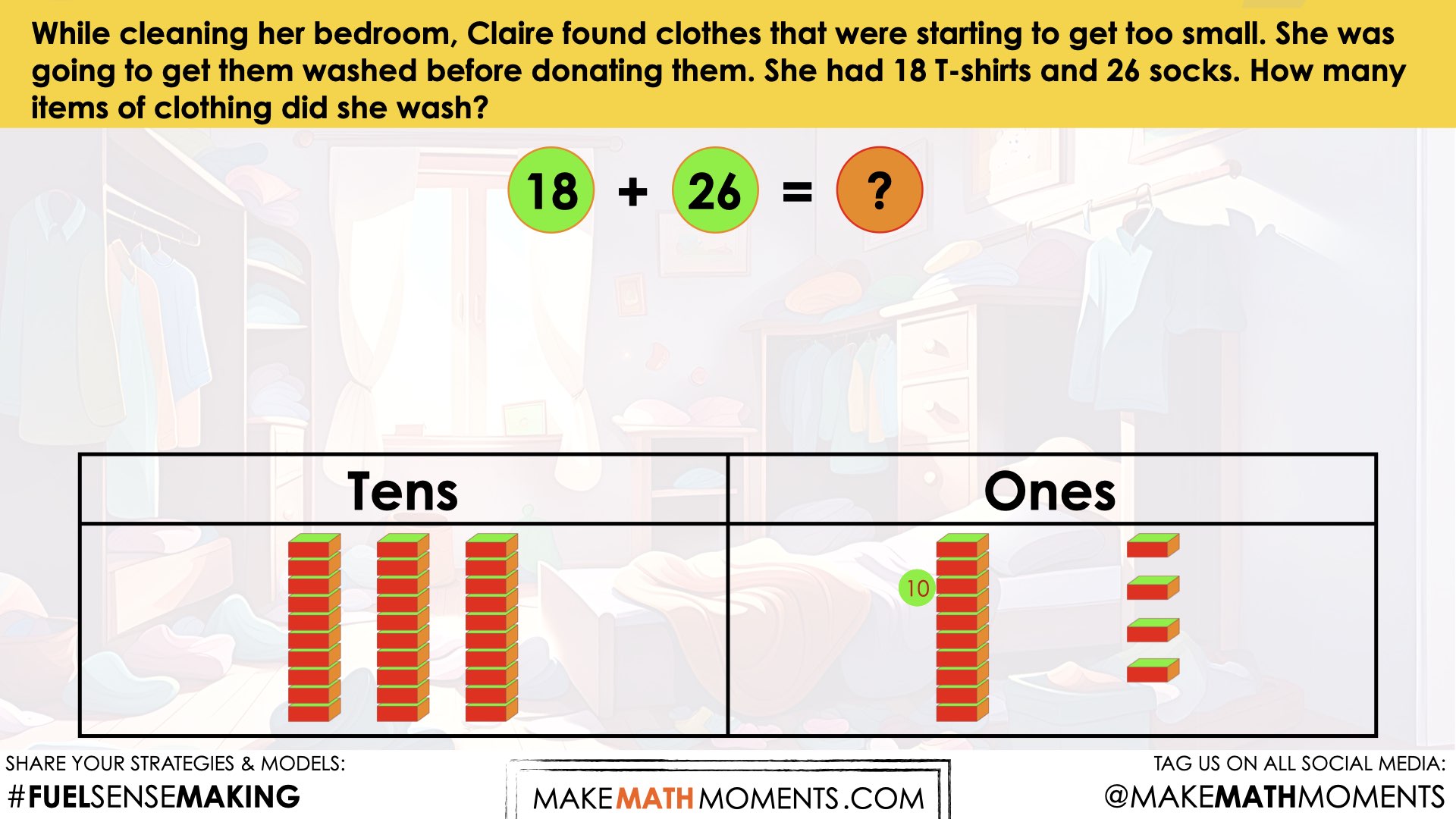
As 26 is added to 18, there is another 10 created. This visual can be used to demonstrate where the 10 goes when adding 8 and 6 before using the standard algorithm.
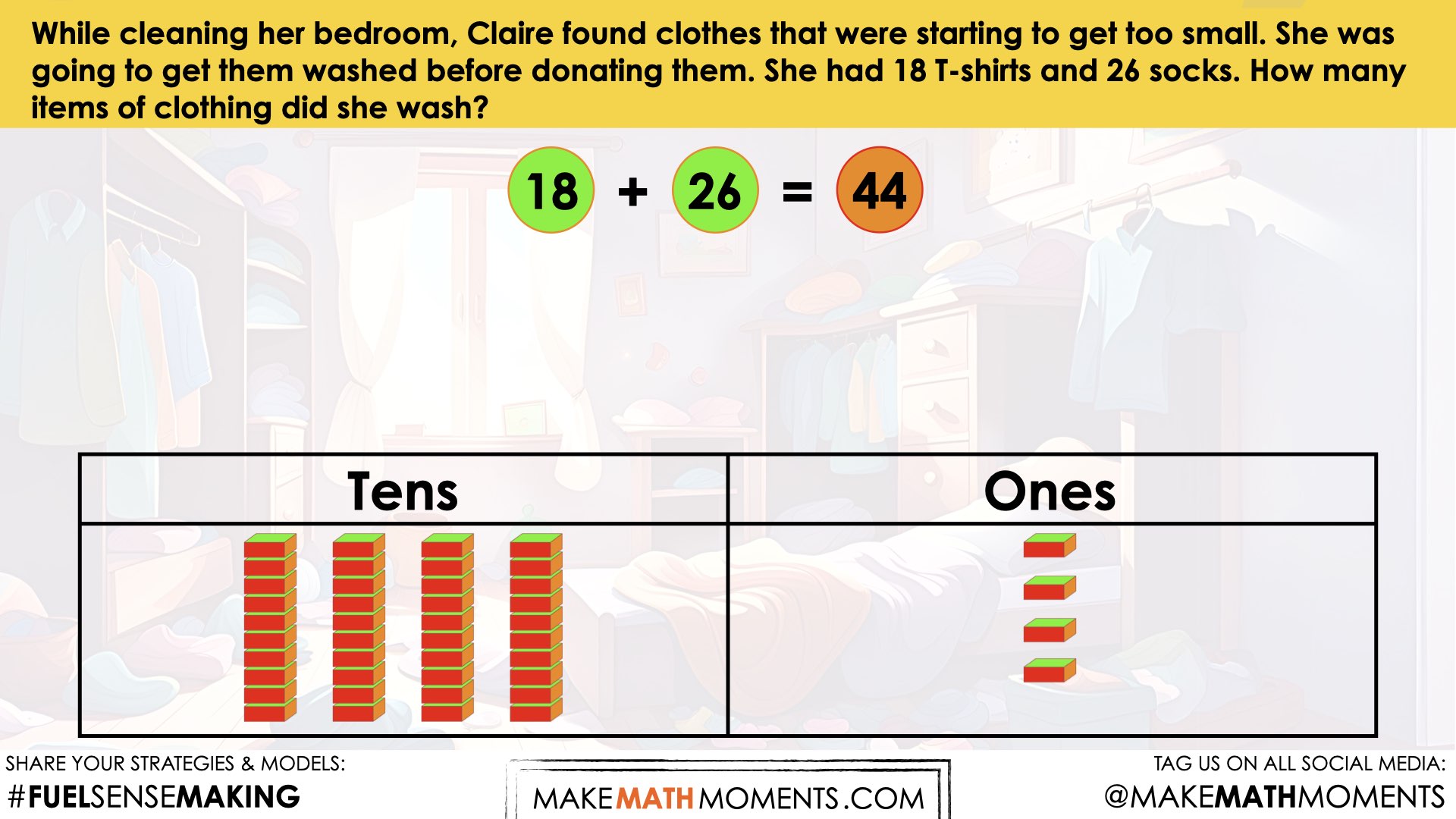
Reveal Option #2
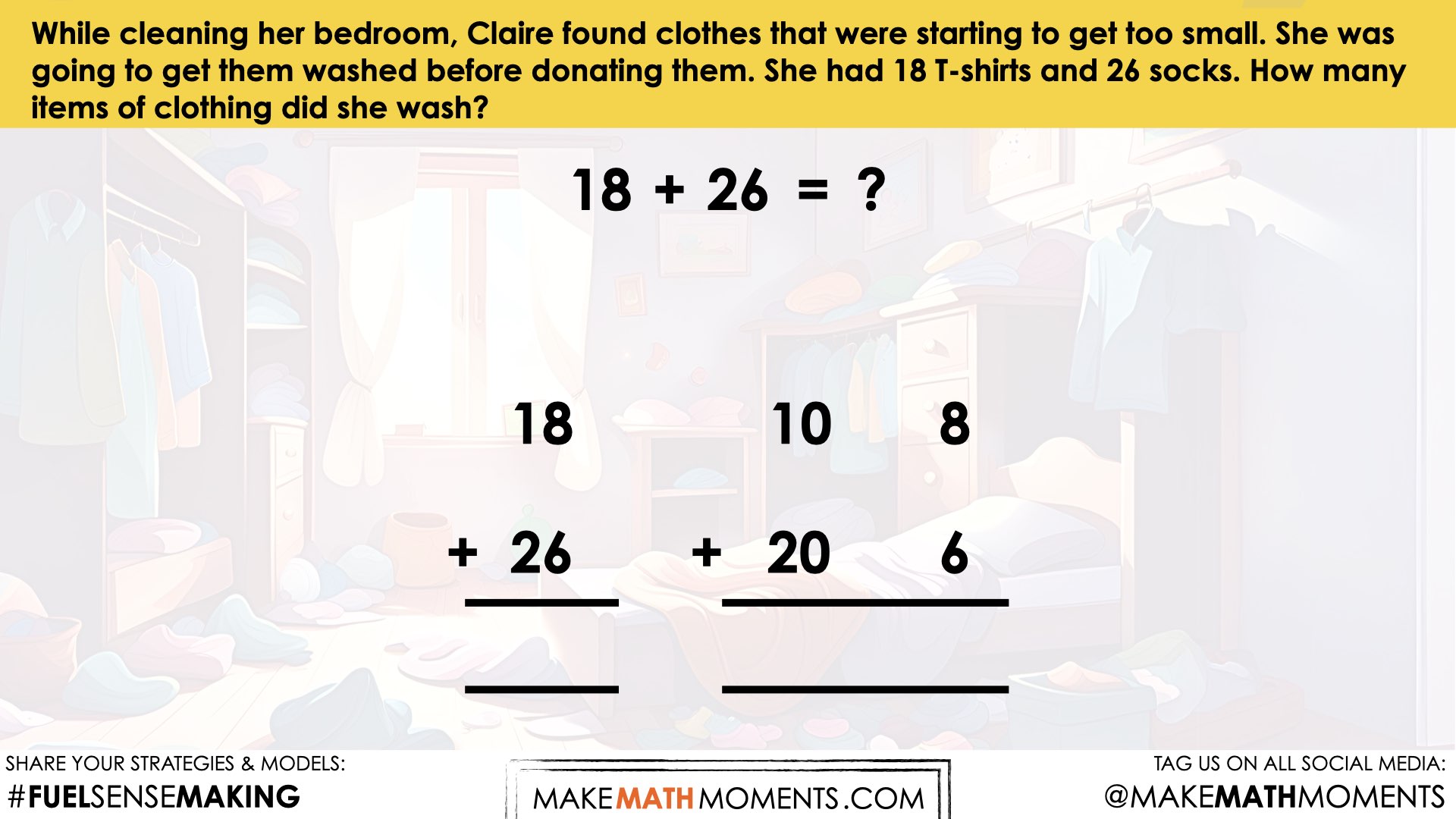
The standard algorithm has been decomposed horizontally (often referred to as horizontal decomposition). It involves breaking up the addends based on their positional value. This visual may be helpful for students to “see” where the ten in 14 went.
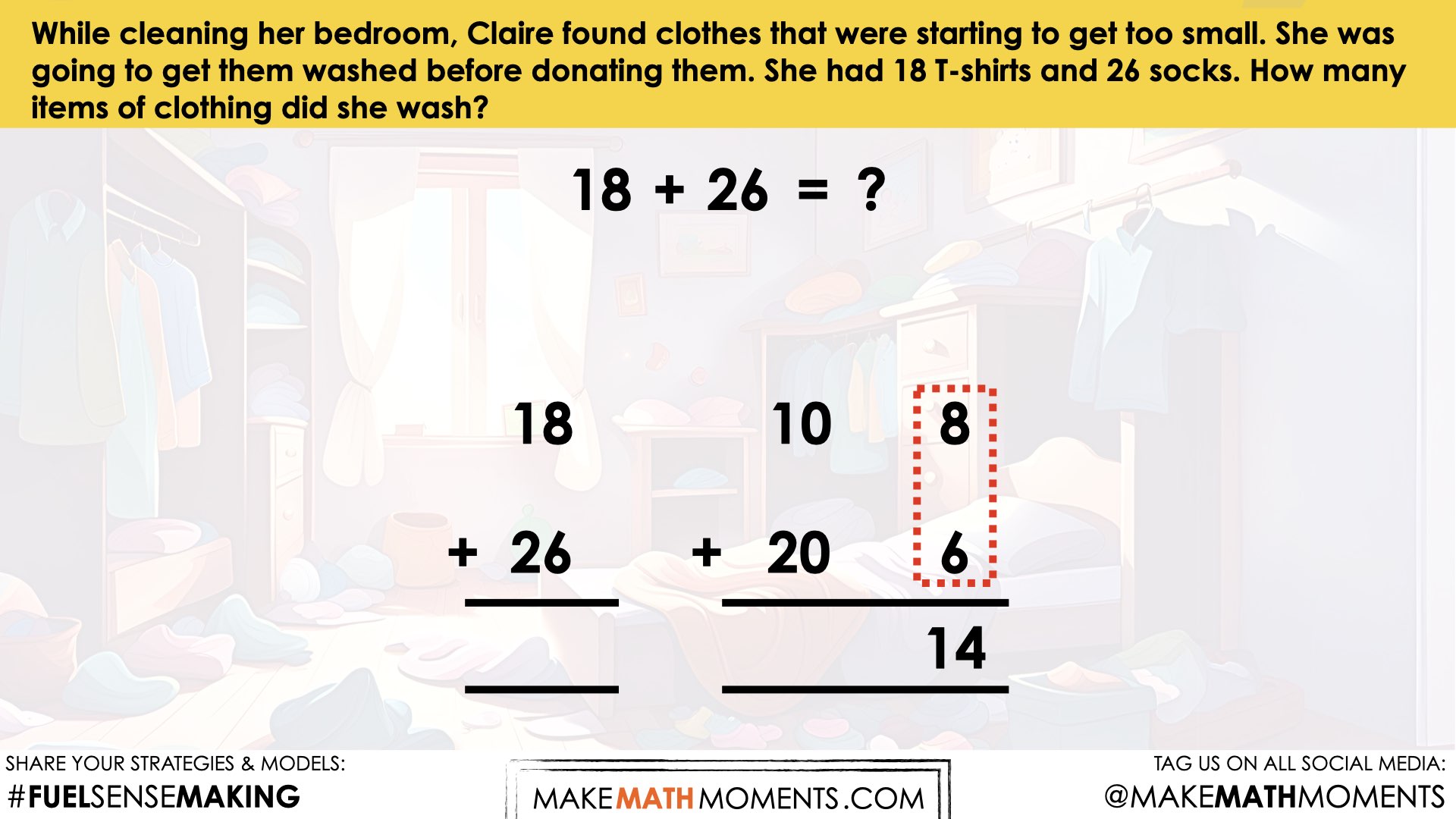
This process demonstrates how the ones are added first. This may be new thinking to students because we read left to right. But we typically complete the algorithm from right to left.
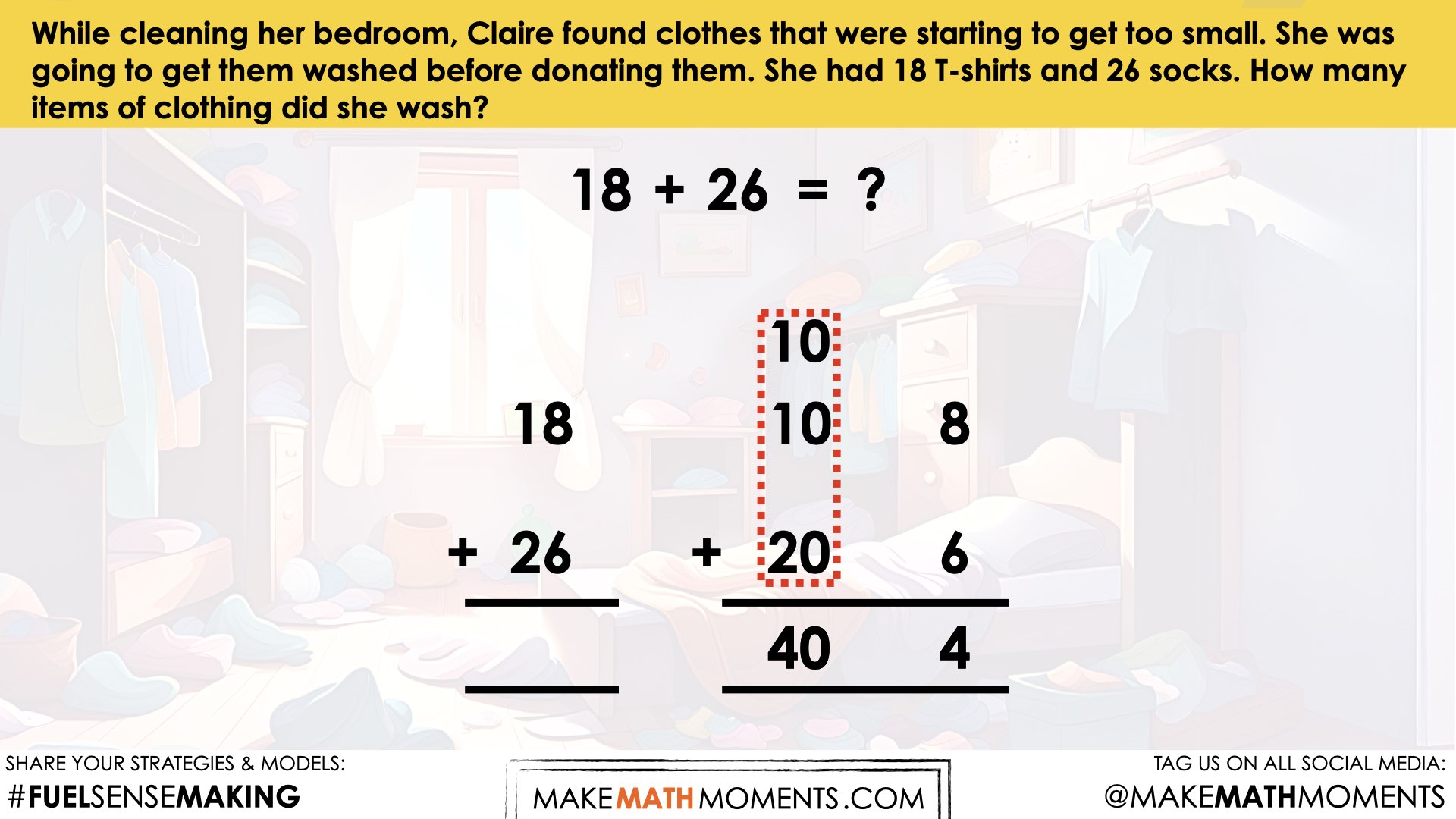
14 has been decomposed into 10 and 4. The 4 stays with the one and the ten is now above all of the other tens in the question.
Now add all of the “tens”. All of the tens are added together. This may help students to use the proper wording “we are adding the tens” instead of “add the 1” that is often said during the standard algorithm.
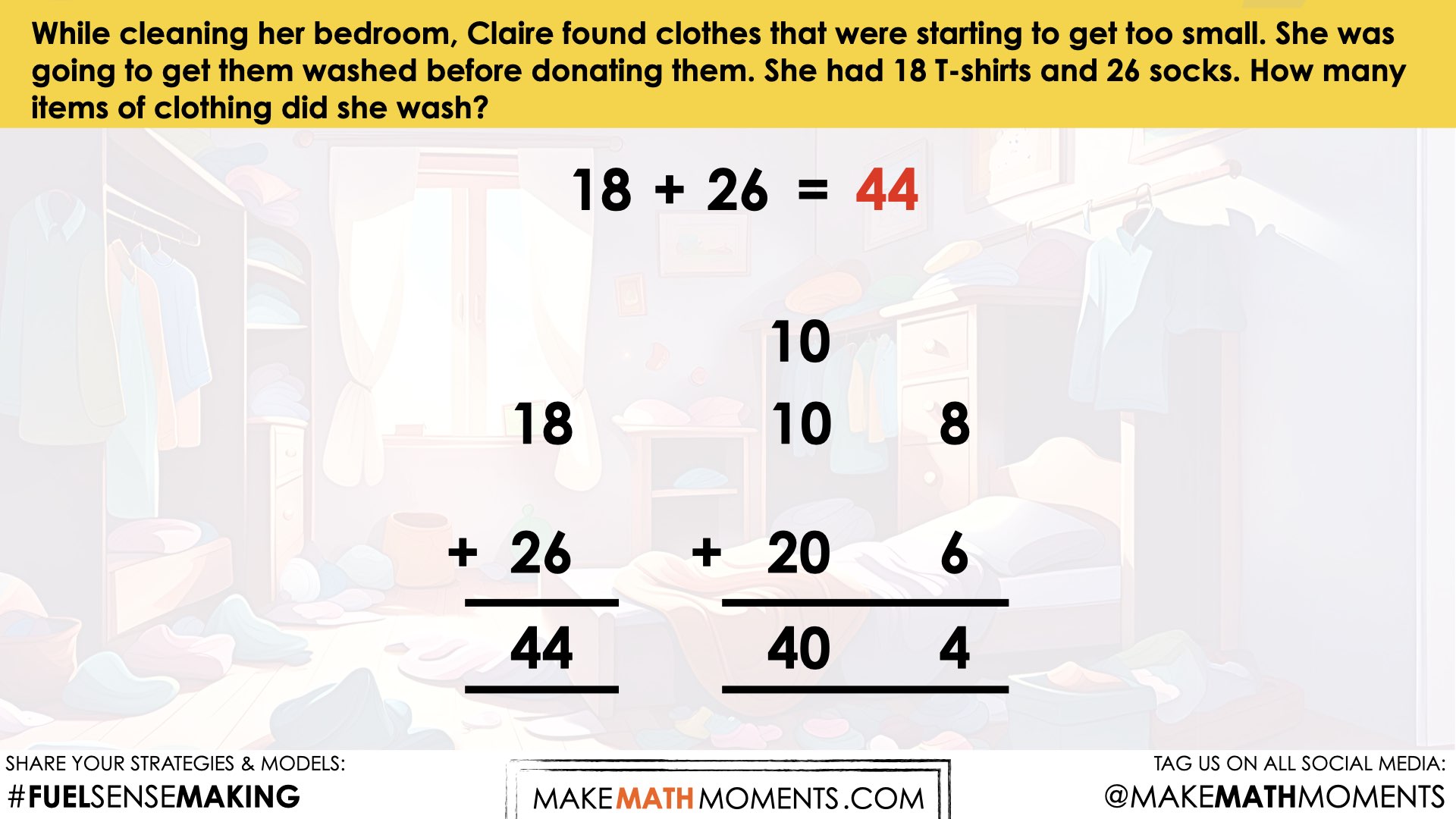
The side by side is done to make the connection to the standard algorithm. Again, discuss the importance of using the wording “carry the 10” rather than “carrying the 1” which creates confusion of where the ten went in 14.
Reveal Option #3
This reveal decomposes the standard algorithm.
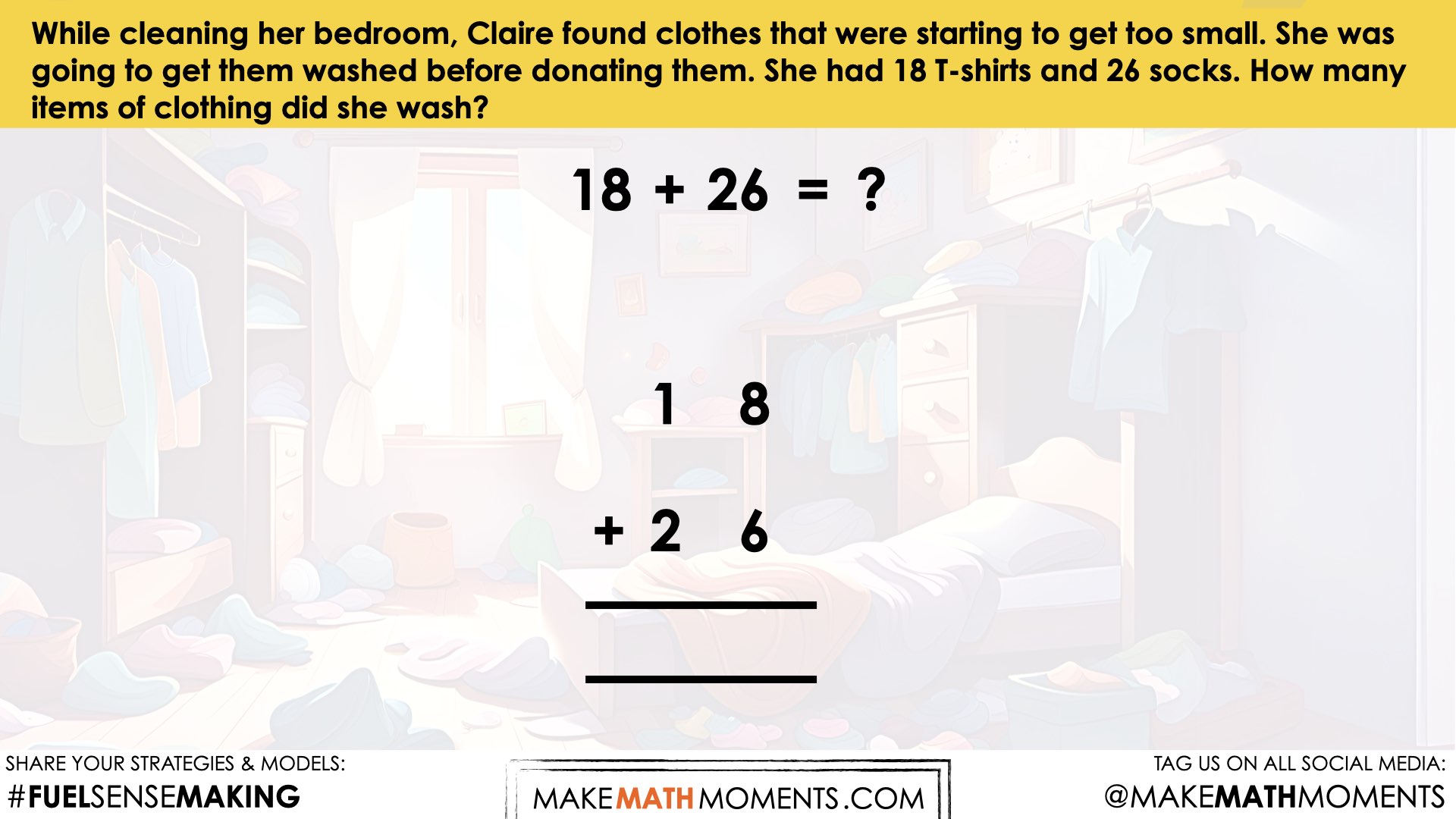
It is important for students to understand the value of the 1 in 18 and 2 in 26. It does not mean that we are adding 1 and 2, we are adding 10 and 20. Encourage students to use that language when they are adding to reinforce the place value understanding.
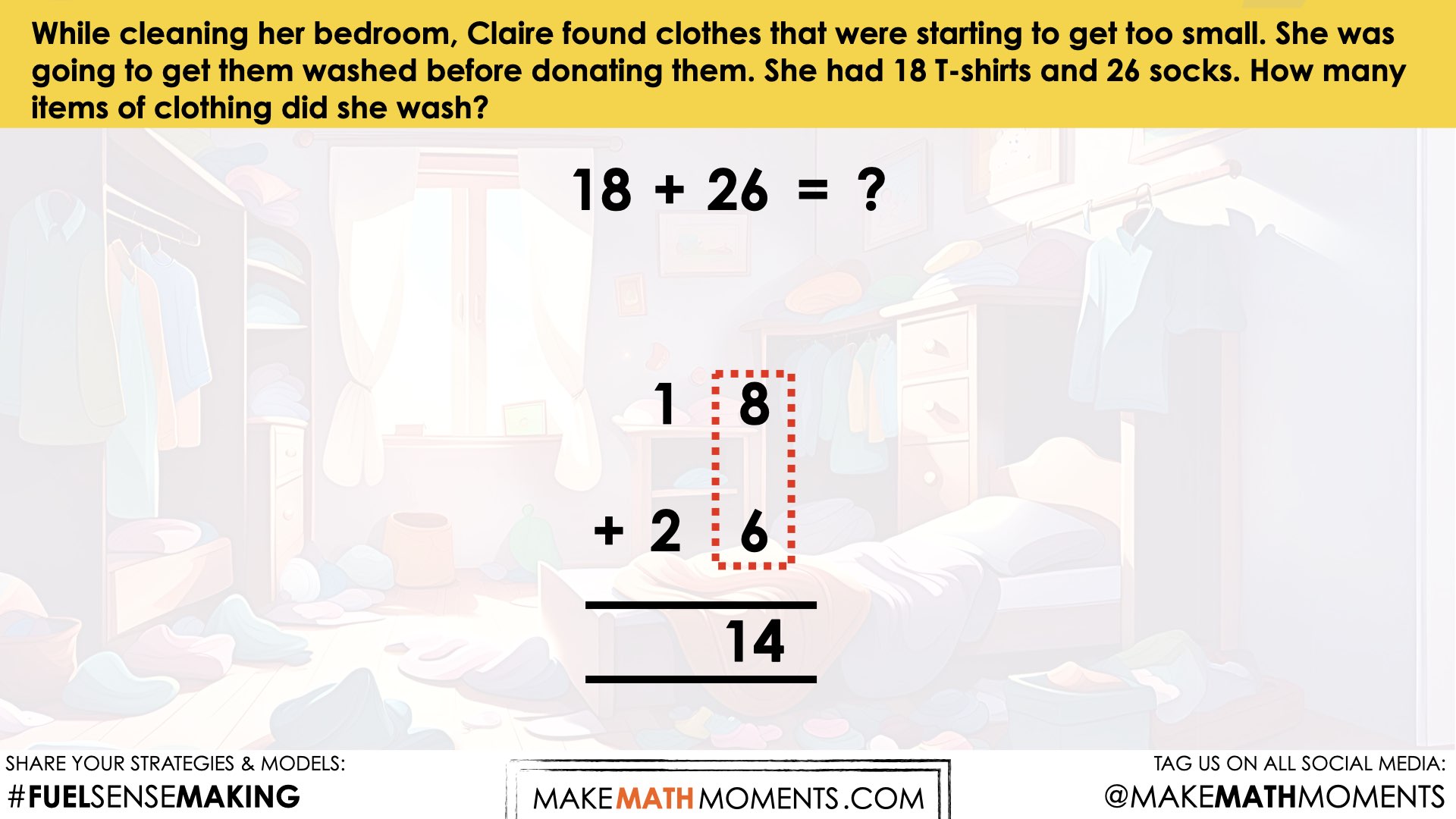
As mentioned in reveal #2, a discussion may need to take place to explain what is happening to the ten in 14. The picture below can be used to explain.
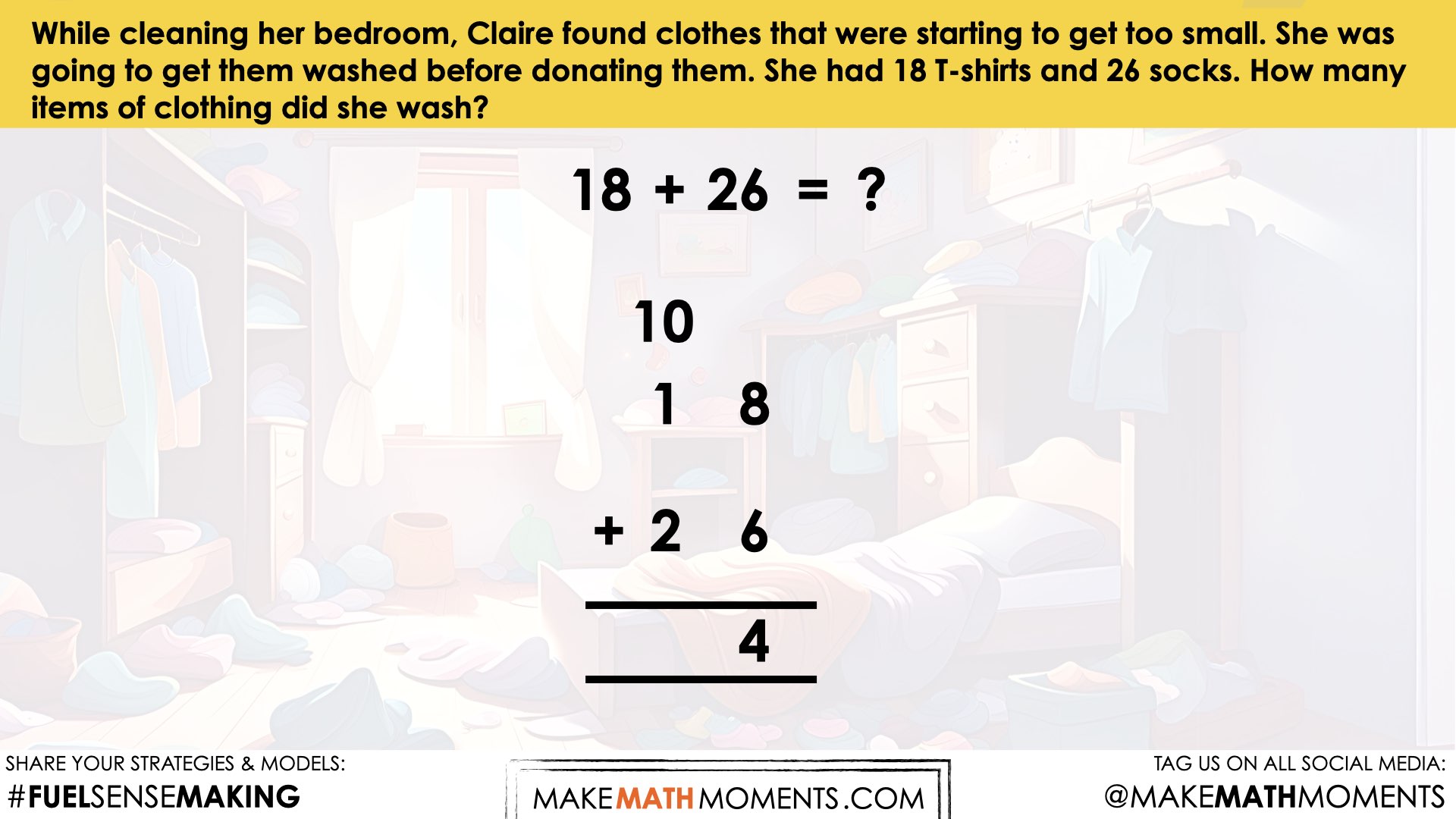
Now we add all of the numbers in the tens column to create 40.
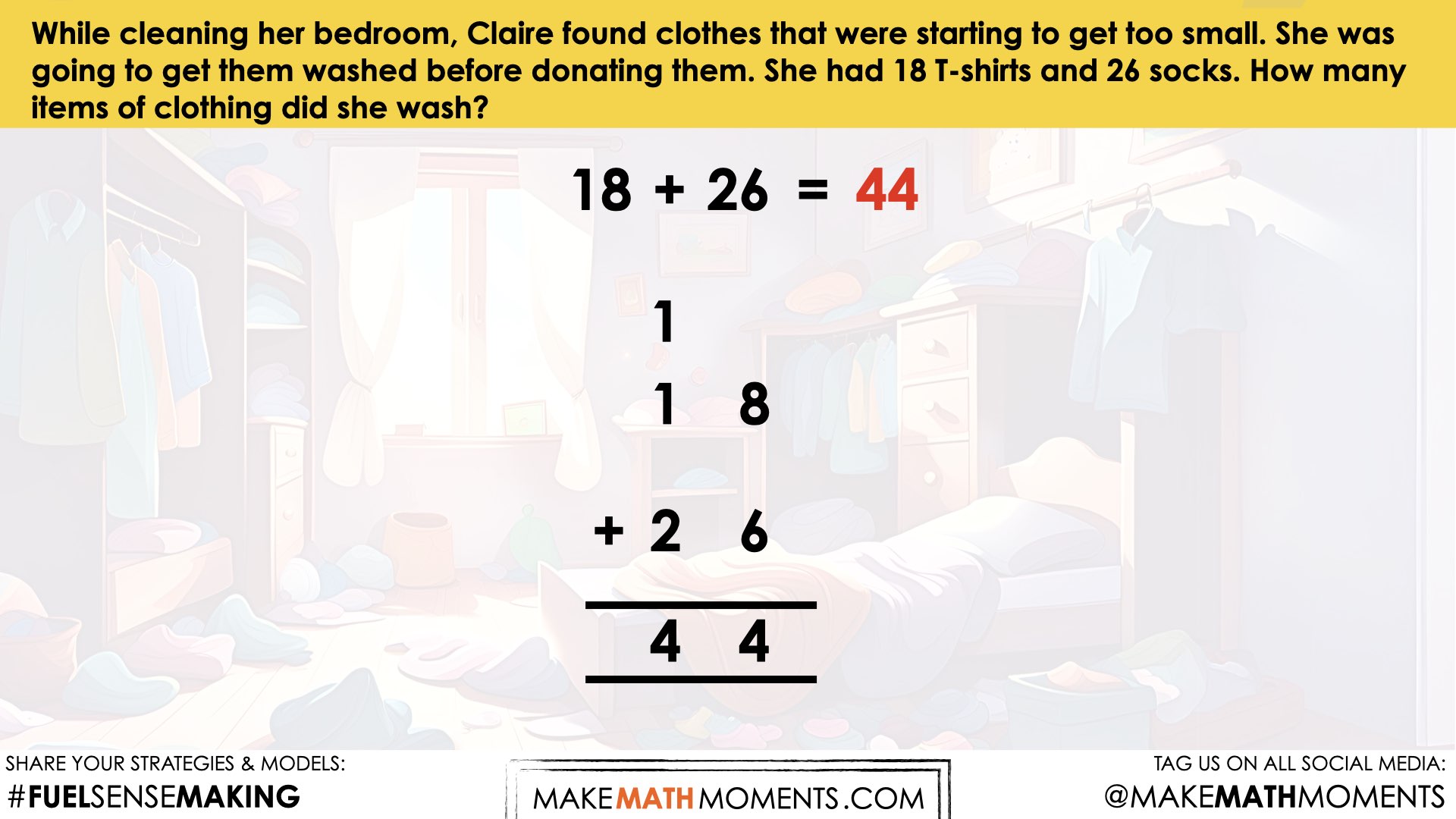
Consolidation
Login/Join to access the entire Visual Prompt, downloadable slide decks and printable handouts for this lesson and all problem based units.
Reflect and Consolidation Prompts
Login/Join to access the entire Visual Prompt, downloadable slide decks and printable handouts for this lesson and all problem based units.
Resources & Downloads
Login/Join to access the entire Visual Prompt, downloadable slide decks and printable handouts for this lesson and all problem based units.
Printable Lesson Plan PDF
Videos, Images & Media Files
Apple Keynote Presentation
Powerpoint Presentation
Printable Consolidation Prompts
Educator Discussion Area
Login/Join to access the entire Teacher Guide, downloadable slide decks and printable handouts for this lesson and all problem based units.
Explore Our 60+ Problem Based Units
This Make Math Moments Lesson was designed to spark curiosity for a multi-day unit of study with built in purposeful practice, number talks and extensions to elicit and emerge strategies and mathematical models.
Dig into our other units of study and view by concept continuum, grade or topic!
